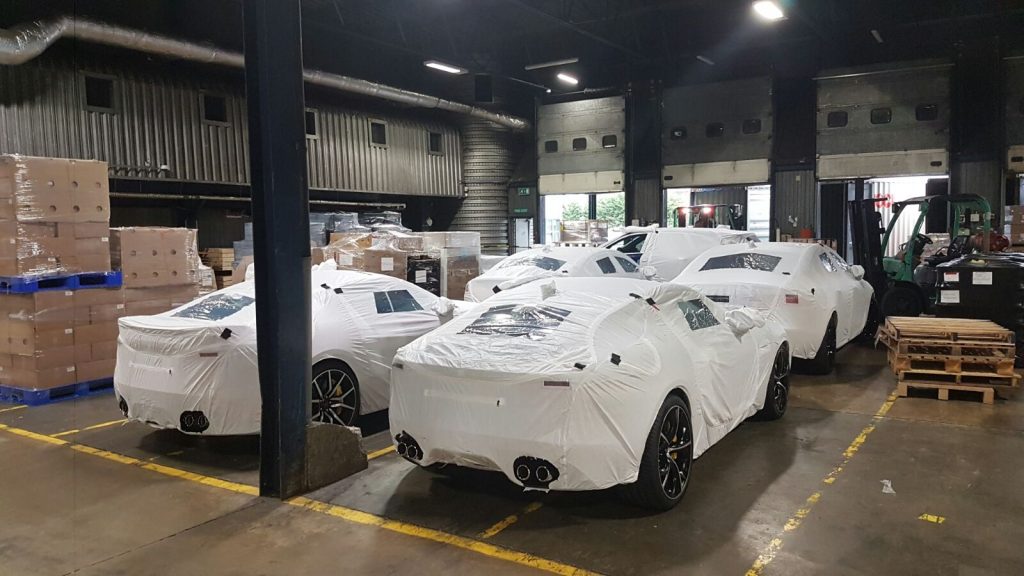What is a ToR?
The Transfer of Residence form has been introduced to replace the old manual forms HMCRC used. It allows relief from customs duties and import VAT when moving your personal effects to the U.K.
Will I Qualify for Import Tax Relief?
To qualify for import relief, you must:
• have lived outside the EU for at least the last 12 consecutive months
• have used and had possession of the goods for at least the last 6 consecutive months
• have used the goods and are going to continue using them in the new place of residence in the UK for at least the next 12 months
• be importing the goods within 12 months of coming to live in the UK
• not lend out, pledge, give away, hire out or transfer the goods within the first 12 months after the date on which they were imported
So, I qualify to bring my vehicle in under a ToR, when should I apply?
We strongly recommend that you apply for a ToR PRIOR to shipping your vehicle – it can, in the worst-case scenario, take up to 4-5 weeks for HMRC to process your application.
How do I apply for ToR Relief?
You will need to fill out a ToR01 form online – click on the link below
https://www.gov.uk/government/publications/application-for- transfer-of- residence-tor- relief-tor01
Please note, you cannot save the document and come back to it later, it must be completed in one go.
What Information will I need to supply online to complete the ToRo1?
1. Applicants Details
You will need to enter:
- Your normal place of residence in the U.K.
- Telephone/Mobile Number
- Email address
- National Insurance Number if you have one
- Date of Birth
2. Your new situation in the UK
You will need supply:
- The date you have lived, or from what date you expect to live in the UK
- What you are planning to do in the UK, Work, Study, Marriage, Other
- Provide the name of your employer/educational establishment/Other
3. Family and/or partner details:
You will be asked to provide details of if your family/or partner is coming to the UK
- Enter Full name of each family member coming with you
- Enter Date of Birth for each family member coming with you
4. Your situation in the Country outside the European Union (EU)
You will need to confirm
- Where you resided before moving to the UK
- The address of your residence
- The date you stopped living at the address
- If you owned your home or rented it
- Provide Copy of purchase agreement or tenancy agreement
5. During your stay in the Country outside the European Union (EU)
You will need to confirm
- Whilst you lived abroad did you own your home in the UK
- If you did provide the address
- Provide your departure date
6. Have you previously lived in the UK or another country in the European Union (EU)
If you have previously lived in the UK you will need to confirm this and provide
- The date you left the UK
- What reason you left the UK for, work/study/other
- Supply name of address of employer or educational institute
7. Means of transport
If you are importing a Car, Caravan, Motor Bike, Trailer provide
- Brand
- Model
- Year of Manufacture
- Identification or licence plate number
- Registration Number
- VIN or chassis number if applicable
- Date of vehicle registration
- Country of issue
- Purchase Date
8. Pets, livestock and animals
Confirm if you are importing any pets or animals if yes provide
- Type of pet
- Pet passport and any identification details
9. Other reliefs or exemptions from tax
If you previously applied for exemption or relief from tax on the same goods then answer Yes and provide
- The date you applied for relief or exemption
- Which customs authority you applied to
10. Date of Entry
Confirm if the goods have already or not, if not provide
- Date the goods will arrive in the UK, an ETA is OK
11. Declaration
- Confirm the information you have given is correct
12. Print the form
- Give your full name
- Current place of residence
- Number of attachments – for example proof of residency etc
13. What to do now
You can scan the form and attachments and send by email to
nch.tor@hmrc.gsi.gov.uk
OR
Post to:
HM Revenue and Customs
National Clearance Hub
Ralli Quays
3 Stanley Street
SALFORD
M60 9LA

